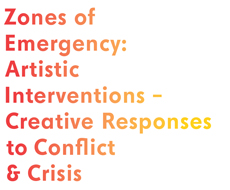“The physical voice is an expression of our social voice and through its use, we either reinforce or shift our sense of power”
-Heather Chetwynd, “Releasing Voices, Reclaiming Power: The Personal and Collective Power of Voice”
Chetwynd, in her article, discusses the role of liberating one’s physical voice to galvanize people to act and to express their thoughts. Her connection between the vocal and the ability for activism raises the general question: how can any form of voice prompt action, provoke people to release their thoughts and opinions to the public?
We use the term voice to describe an author, an artist, a creator’s style and way to express a message, much as we use our own voices to communicate messages. Though these manifestations of voice provide us greater freedom to convey our opinions and judgments, the world around us often restricts our voices.
A voice can be visual, aural, or both, and all forms meet their restrictions. Institutions and social norms often restrict the voice, malevolently and benevolently. Cultural beliefs and standards also restrict all forms of the voice. Our peers restrict our voices. Our own fears restrict our voices.
Media culture embodies and silences voices simultaneously. Mass media transmits voices from the people whom they determine are the most significant. In the process, we hear voices we would not hear, but consequently, we often overlook voices closer to us.
Stella McGregor of the The Urbano Project promotes the voices of teens in urban Boston. The Urbano Project serves as a space where artists and teens in the greater Boston community can unite to create art, express their experiences, and liberate their voices. The project works to teach Boston teens how to combine art and community, representing their experiences, stories, opinions, and aspirations with art.
The Urbano Project provides art education for today’s youth in a society where arts education in public schools have begun to decline. The organization empowers today’s teens to express their stories of living in an urban environment and in turn to encourage teens to act in their communities to make them a better place. The Urbano Project gives teens the ability to release their voices through art to raise attention on the conditions of communities near us that we often do not have a great knowledge of, in turn encouraging us to also act to help improve conditions of communities that have fallen under the media radar.
The Urbano Project uses art as a form of communication, education, and expression. The organization’s work with youth shows how art can be used to empower and liberate, to critically analyze the world around us, and to improve the world we live in.

